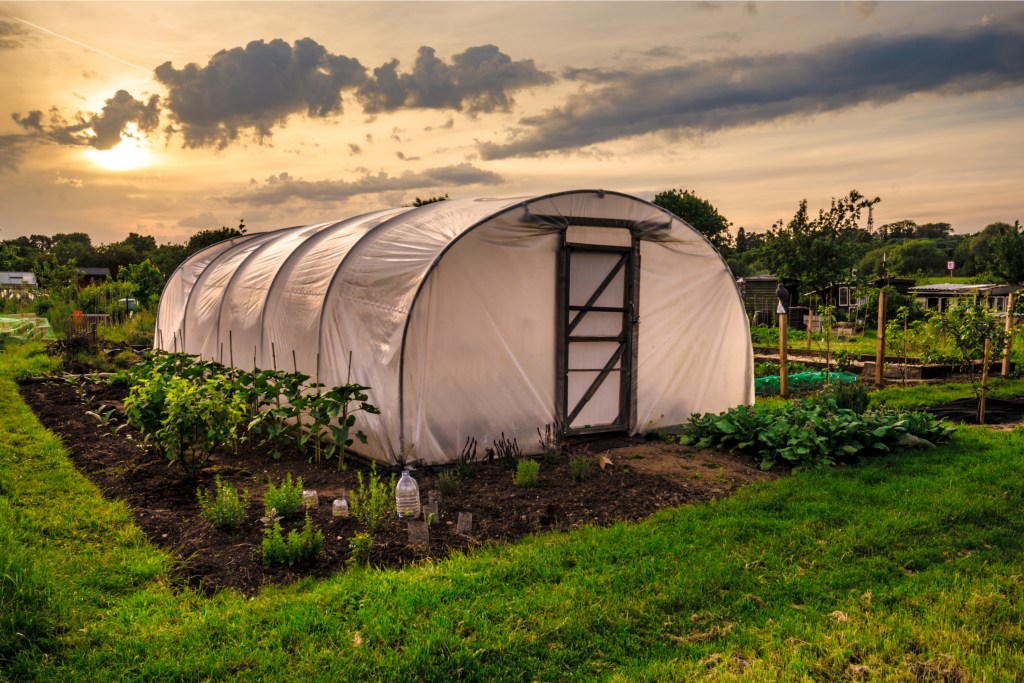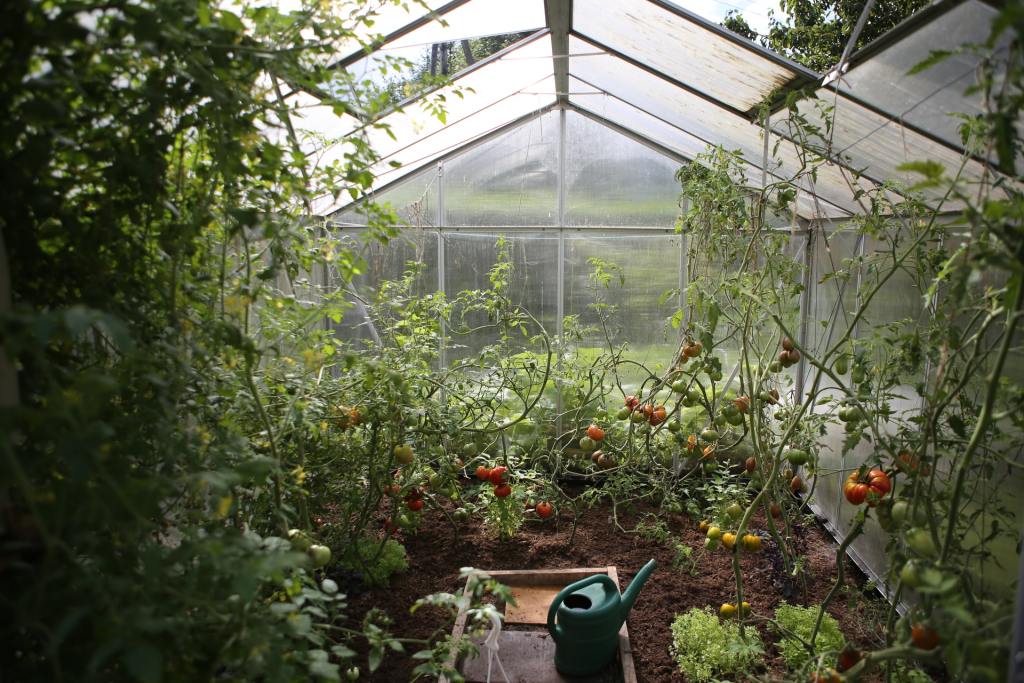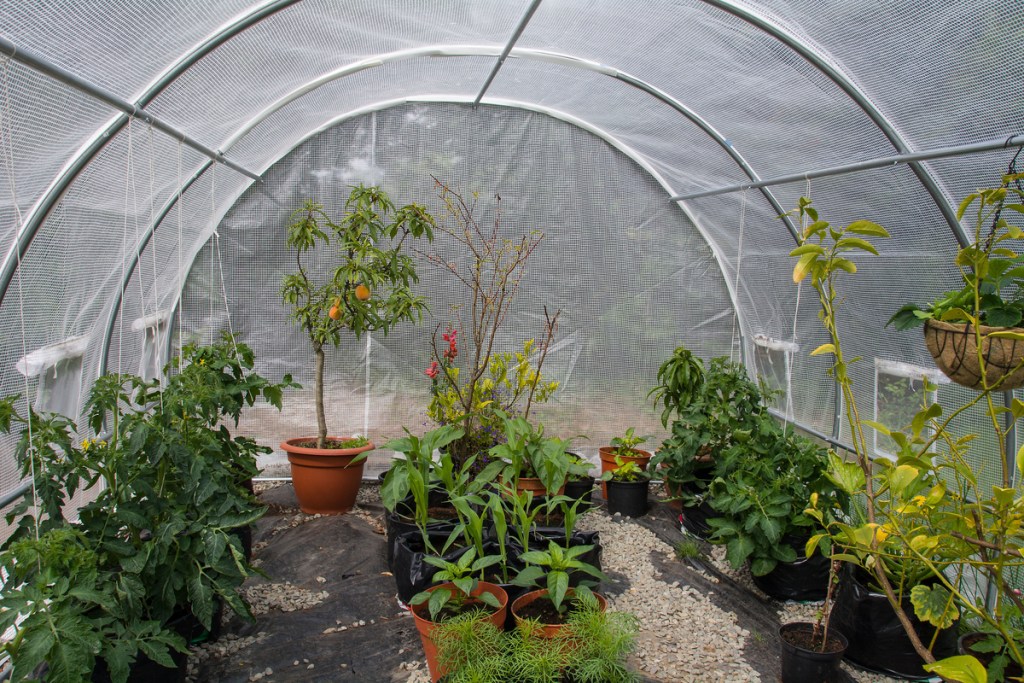Gardening is an excellent pastime: It can be as straightforward or as intricate as you want it to be. If you’re a more aspirational gardener, you may want to grow vegetables year round, or even grow exotic plants. You’ll have an easier time doing that with either a polytunnel or a greenhouse. You’ve probably heard of a greenhouse, but polytunnels may not have been on your radar before. Not sure which one to choose? We’ll help you decide.
What is a polytunnel, and what is a greenhouse?
Polytunnels and greenhouses are both structures used to grow plants that require more heat than is available outdoors. Both are designed to capture and keep heat, but in different ways, and each has its own advantages and disadvantages.
Greenhouses use glass or polycarbonate plastic panels set in a metal frame to focus sunlight. They can be any size or shape, but the most traditional ones resemble small houses. The glass is typically clear, but can also be opaque.
Polytunnels consist of a plastic sheet, which is typically either clear, opaque, or green, stretched over a series of aluminum arches. Polytunnels are usually shaped, as the name implies, like a tunnel. However, there’s still some amount of variety in shapes; they can also be shaped like domes or tents.

Which is easier to construct and maintain?
Polytunnels are much easier to put up, without a doubt. Greenhouses require a flat, hard surface to serve as the foundation, which means either flattening and compacting the soil or placing pavement or stone slabs in your yard. Polytunnels don’t need this, and can be set up just about anywhere.
The glass or polycarbonate panels and tougher frame makes constructing greenhouses a time-consuming process, as well. Many greenhouses need to be installed by professionals, while polytunnels can be set up and maintained by anyone.
The differences in construction mean that polytunnels can be moved with relative ease, while greenhouses are a much more permanent fixture. Additionally, polytunnels are easier to expand after initial setup. Greenhouses, on the other hand, are much more difficult to expand or change once they’re constructed.
Maintenance for both is fairly simple: Keep the outside clean and check regularly for damages. Polytunnels are more likely to be damaged, as the roof and walls are only a thin sheet of plastic. Greenhouses, having thicker walls made of glass or polycarbonate, are harder to damage. However, polytunnels are also easier to repair by replacing the sheet, which can be done at home on your own. It’s more difficult and costly to repair greenhouses when damages occur, since repairs often involve replacing one or more panes of glass or polycarbonate.

Which one handles the elements better?
In most cases, greenhouses handle the elements better, however it does depend on which elements you’re talking about. Storms can blow a polytunnel’s cover off, but only damage greenhouses in extreme circumstances. Greenhouses are also generally better at keeping pests out. Polytunnels can be damaged by pests, especially birds.
However, the glass panes in greenhouses can focus sunlight too well sometimes, which can lead to sunburnt or scorched plants. Additionally, while a fire in a garden is never good, the overall structure of a greenhouse will, in most cases, survive a fire, while a polytunnel is less likely to.

What plants can be grown in each?
You can grow a range of plants in each, depending on how exactly your polytunnel or greenhouse is arranged. There are a few things to keep in mind, though. Greenhouses typically let in more light than polytunnels, especially polytunnels with opaque or green coverings. This means that greenhouses are suited for plants that enjoy bright or direct sunlight, while shade loving plants will fare better in a polytunnel.
When the covering is affixed properly, polytunnels have better ventilation and air flow, owing to the tunnel shape of the structure. This makes polytunnels an excellent choice for plants that need air flow, while greenhouses are better suited for plants that enjoy humidity, such as orchids. However, if the cover is loose, then the air flow is disrupted, and your polytunnel can develop condensation that encourages molds and fungi, or leaf rot if it falls onto the plants.
Ultimately, only you can decide which one is right for you. If you love the aesthetic and don’t mind the price, then a greenhouse might be a good choice. If you need something a little easier to set up, then you might be happier with a polytunnel. Both are wonderful ways to grow plants out of season, overwinter sensitive plants, and cultivate exotic, tropical flowers and fruits.
Editors' Recommendations
- A beginners guide on what to grow in your greenhouse for a thriving garden
- Small greenhouse tips: 5 ways to make the most of limited space
- The ideal greenhouse temperature and humidity settings for every season
- 5 fantastic backyard design apps to help you craft your own personal oasis
- What you need to know about growing sugar snap peas in containers



